A REMARKABLE RIVER
The Maroni River springs in Suriname, in the heart of the forest of the Guiana Plateau, and flows eastwards before joigning the Atlantic in a vast estuary 4.5 km wide.
The upper reaches of the Maroni are exceptionally wild, as no villages are established there. Only the Wayana Amerindians occasionally travel upstream by pirogue for hunting or fishing expeditions to supply their villages. At present, around 1500 people belonging to the Wayana and Teko ethnic groups live in a small number of villages located between 2 and 4 hours by pirogue upstream from the town of Maripasoula. This area is protected. It is only accessible with prefectural authorisation or by invitation from the local population. Despite this protection measure, illegal gold panning activities are rampant and impact the quality of the river’s waters right into the villages. Downstream from Maripasoula, the human influence is more significant. The circulation of pirogues on the river as well as hunting and fishing increases and the banks are occupied by houses. Gold panning becomes omnipresent and the river subsequently becomes more turbid. The territory of the Bushinenge begins downstream from Maripasoula. The Maroni is then punctuated by towns and villages of varying sizes, the largest being Saint-Laurent-du-Maroni, located almost at the estuary, with 45,000 inhabitants.
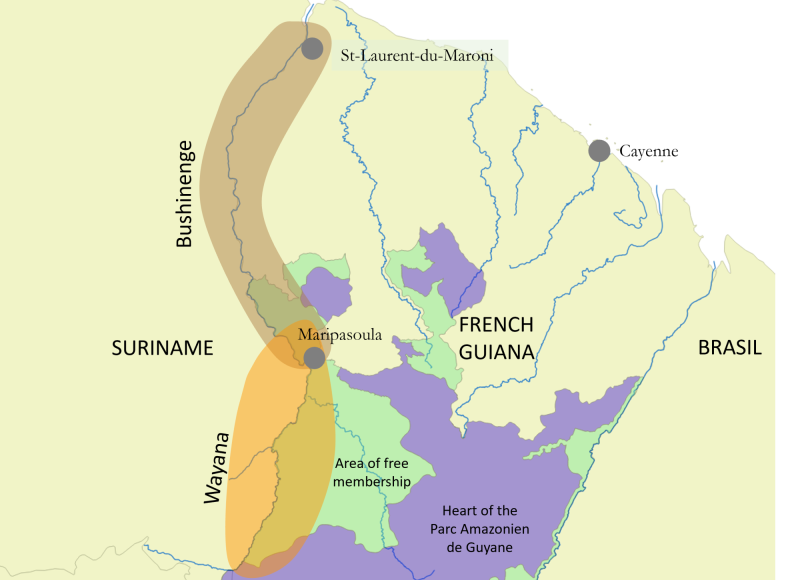
Despite human pressures, the Maroni remains a hotspot or exceptional area of biodiversity, with a remarkable rate of endemism, particularly in fish. It is home to at least 272 species of fish (not counting all the marine species that frequent the estuary), 60 of which are endemic to the Maroni!
A WORLD FIRST
Given this biological richness and the increase in human pressure, particularly from gold mining, the Maroni River was an ideal candidate for the Vigilife Sentinel Rivers programme. The aim is to set up a long-term monitoring of the evolution of this remarkable biodiversity and of the ecological state of the Maroni River.
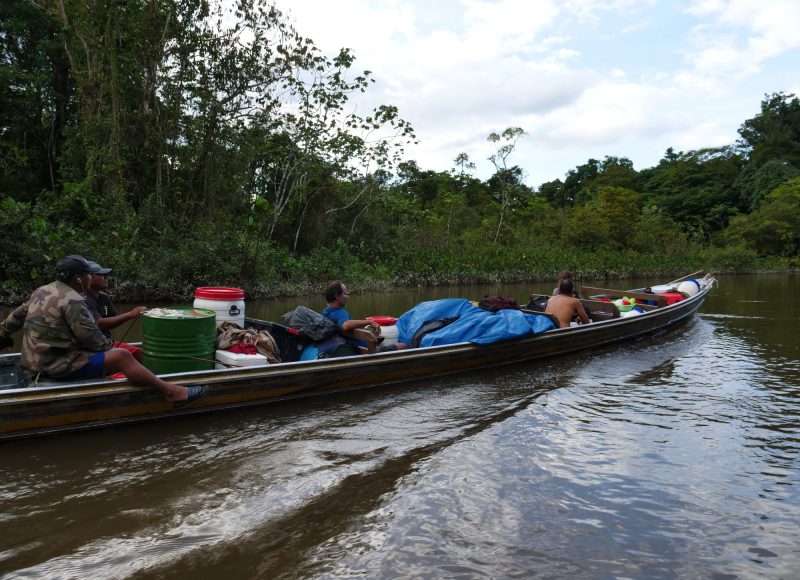
From 8 to 30 November 2021, an international team of biologists surveyed the entire Maroni River over a 600 km stretch of tropical forest. Water samples were taken at 56 sites to analyse environmental DNA. These analyses target five groups chosen for their conservation importance and/or their quality as bioindicators: vertebrates, fish, bivalves, eukaryotes and prokaryotes. These analyses should make it possible to reveal all the living organisms linked to the river, from bacteria to large fauna, such as the giant otter, the tapir or the jaguar.
These samples will make it possible not only to determine the ecological state of the Maroni River as a whole, and to measure the impact of man on this ecosystem, but also to complete our knowledge of the biodiversity of the most remote areas, which have never been the subject of scientific studies until now.
THE LIFE OF THE EXPEDITION
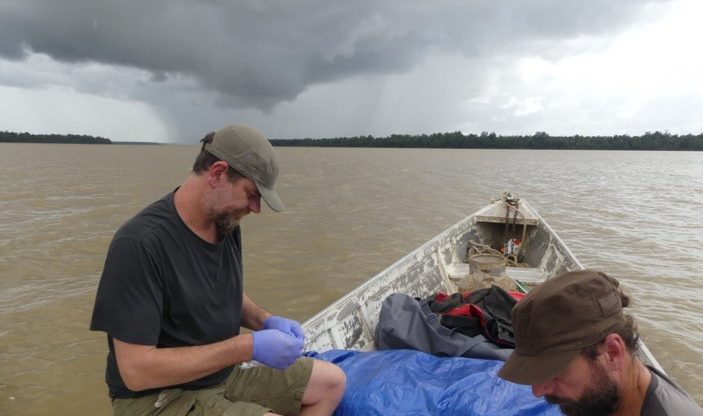
For 18 days, the team lived in complete autonomy, setting up camps in the forest every evening. Two pirogues were needed to transport the 1,500 kg of equipment. The navigation conditions were particularly difficult and the experience and skills of two Amerindian guides were essential to ensure the safety of the people and the equipment. Daily life was punctuated by the dismantling of the previous day’s camp, the boarding of the dugout canoe and the progress upstream, punctuated by water collection operations. At the end of the day, before sunset, the team would choose a site to set up the camp again. The hammocks were set up first, between two trees, and sheltered from the rain by a tarpaulin. The kitchen area was then set up, also under a tarpaulin in case of rain. Afterwards, everyone was busy putting away or drying the equipment (weather permitting), preparing the equipment for the next day’s sampling, photographing the specimens collected during the day and fishing for the evening meal. The meals were mainly made up of fish from the river, rice and couac (dried cassava).
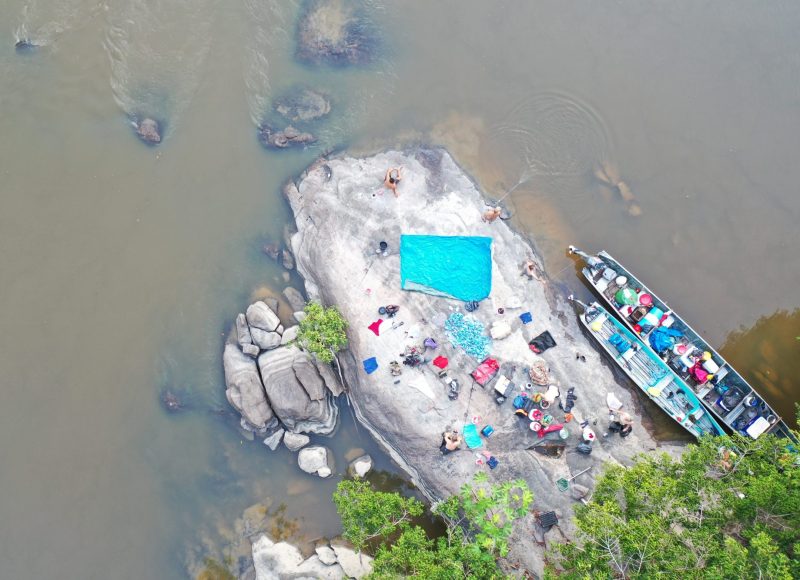
At night, a night fishing session was often organised in order to catch fish to consolidate the genetic reference base. Each species caught was photographed and released. Only specimens belonging to little-known or potentially new species that were not included in the reference database were kept.
PROSPECTS
This Maroni 2021 mission echoes a pilot mission carried out in 2017, which only targeted fish and vertebrates. It will therefore be possible, thanks to this new expedition, to monitor the evolution of the Maroni River over a 4-year period using standardised methods. These first two sampling campaigns initiate a long-term monitoring process with a view to the eventual deployment of a permanent scientific observatory on this exceptional territory, which is still one of the most preserved areas in Amazonia. This observatory project will be developed in consultation with the actors of research, conservation, and institutions in charge of local and national public policies for the knowledge and preservation of biodiversity in French Guiana.
All the knowledge collected will be made available to the stakeholders in French Guiana, including the populations concerned and the local authorities, in order to support them in their efforts to preserve their quality of life and that of the species and natural environments on which they depend.
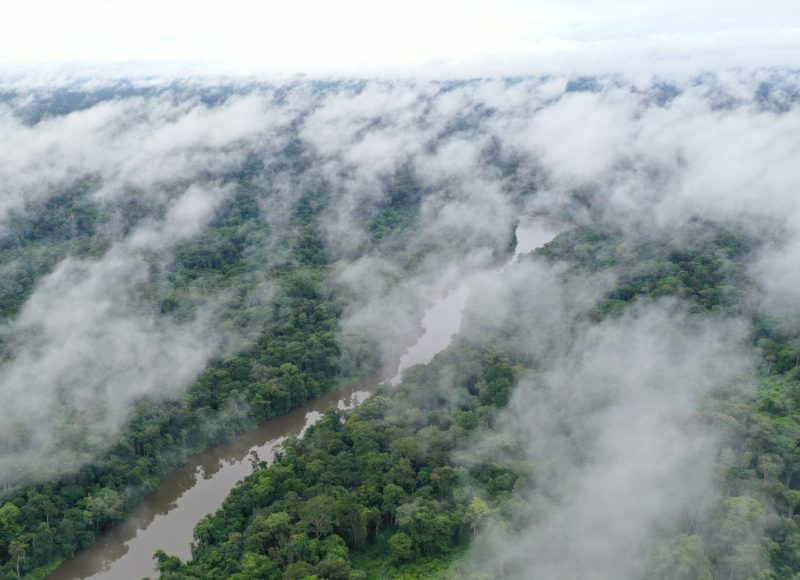
PARTNERS
We would like to thank all the partners of the expedition, in particular the Office de l’Eau de la guyane, the Amazonian Park of Guiana, the DGTM of Guiana, the Wayana customary chief Michel Aloïke, the EDB – University of Toulouse, CIBIO – Biopolis, ETHZ laboratories, the Swiss Federal Institute for Forest, Snow and Landscape Research (WSL), MARBEC, the Beauval Nature NGO, as well as the companies Hydreco, Alkios, and SPYGEN.
